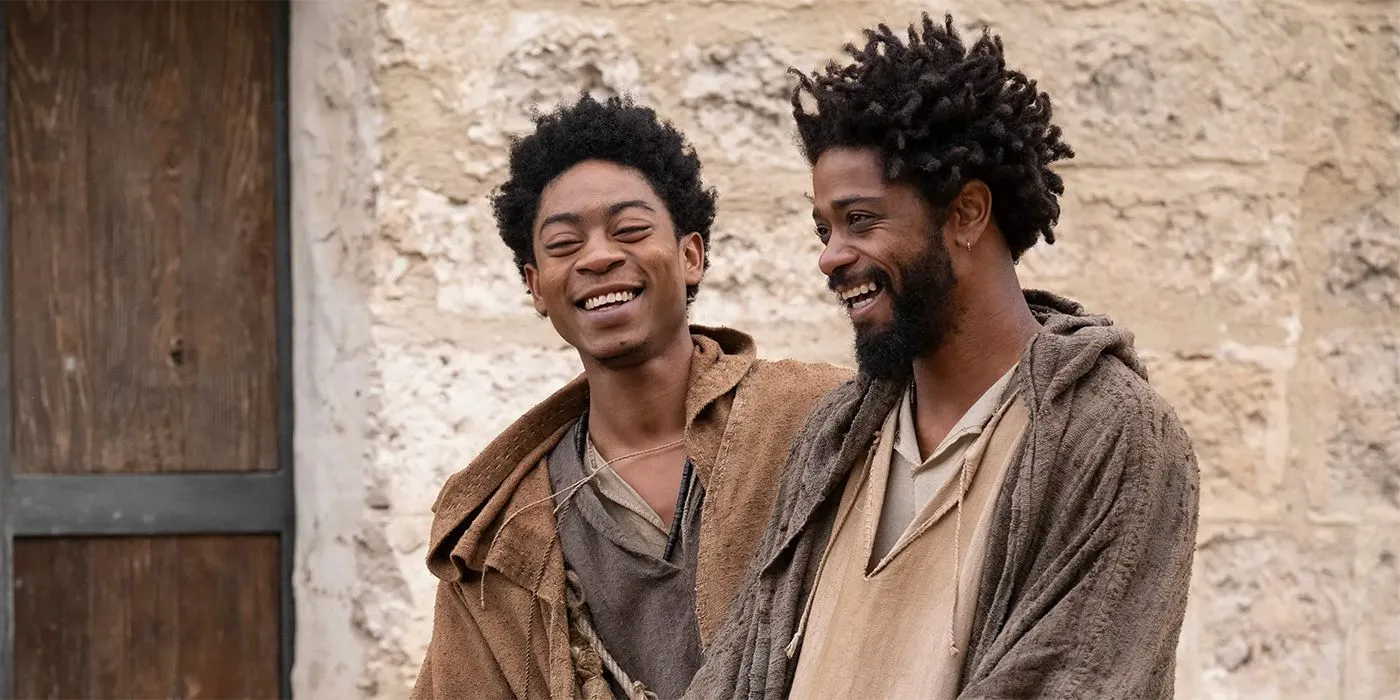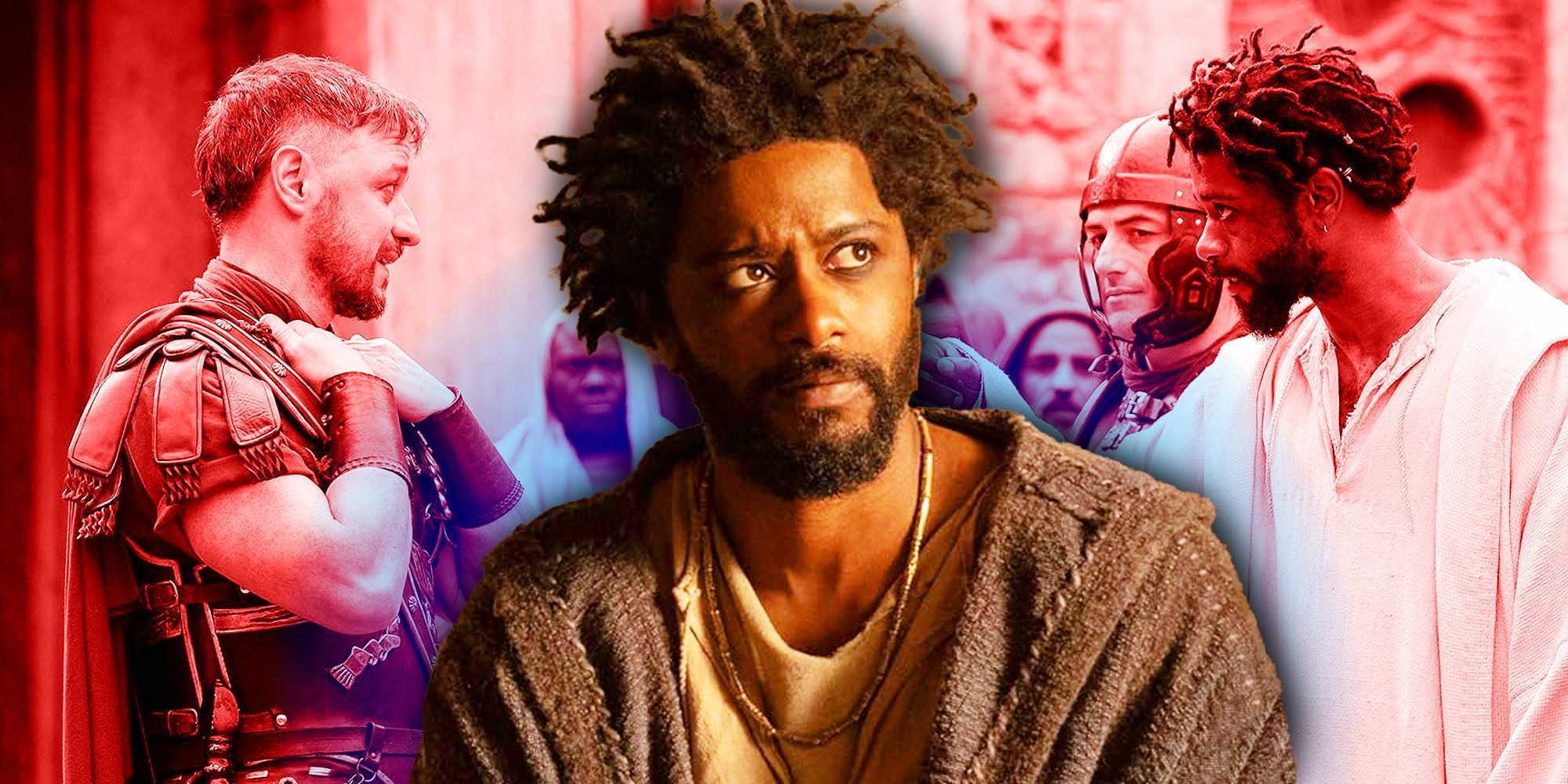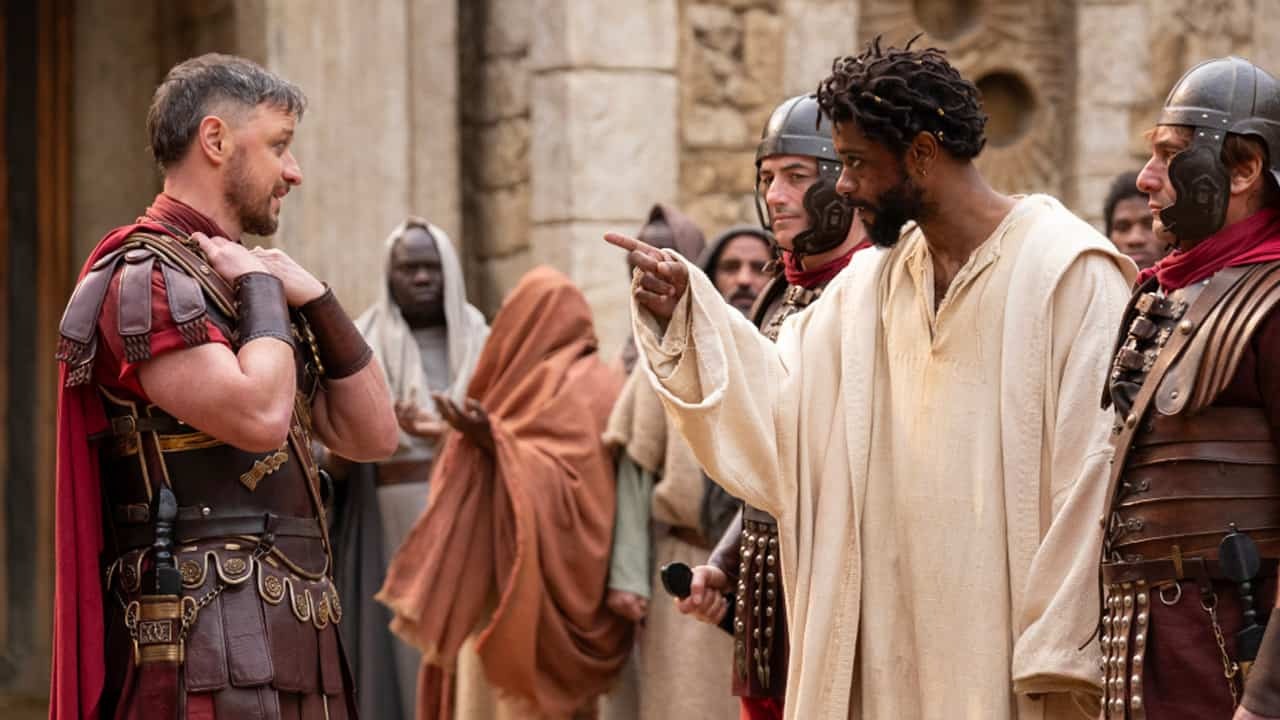Hollywood has long had a fascination with biblical epics, stretching back to its earliest films. But this new entry, directed by Jeymes Samuel and starring LaKeith Stanfield adds a modern voice and unexpected flair.
Unlike classic titles such as Ben-Hur or The Ten Commandments, this 2024 release approaches its themes with satire, introspection, and a change in focus. The final act offers a surprising turn that separates it from the older stories it loosely mirrors.
Before you go further, it’s important to know that this write-up contains many spoilers. If you’re yet to watch The Book of Clarence, you may want to hold off until after viewing it.

But for those who’ve seen it and want some clarity about Clarence’s fate or what Benedict Cumberbatch was really doing in the story, you’ll find your answers here.
Clarence’s Path from Deception to Sacrifice
Set in ancient Jerusalem, the film places Jesus (Nicholas Pinnock) in the background while focusing on Clarence (Stanfield), a man trying to rise above his circumstances. Tired of living a life without direction, Clarence pretends to be a Messiah.
His staged sermons and fabricated miracles draw crowds and money, but also bring the attention of Roman authorities who are quick to crush any figure who offers the people too much hope.
At the beginning, viewers are shown Clarence on the cross, only for the timeline to rewind by several weeks. The road leading to that moment becomes the film’s central focus. Although Clarence lacks belief in God and Jesus, he’s portrayed as someone with deep care for his mother (Marianne Jean-Baptiste) and genuine affection for Varinia (Anna Diop).
The reason he begins claiming to be the Messiah is rooted in rejection—his brother Thomas, also played by Stanfield, denies him a place among Jesus’ apostles. Initially motivated by profit and pride, Clarence eventually changes course.
As his reputation grows, he chooses to use the money he’s earning to purchase the freedom of enslaved people. Part of him still expects more wealth to follow, but it’s clear that his conscience is beginning to influence him.
Clarence is Betrayed and Faces His Punishment
Roman forces are led to Clarence’s hiding place by Judas (Michael Ward), which leads to his arrest. While facing judgment before Pontius Pilate (James McAvoy), Clarence confesses that he’s no Messiah and admits his actions were rooted in greed.
Pilate, however, demands a test—if Clarence can walk on water, he must be divine and therefore, guilty of challenging Roman rule. If he sinks, he’ll be innocent, though drowning is likely.
But then something unexpected happens—Clarence walks on water, to his own disbelief. This moment seals his fate with the Romans, who now see him as a true threat and decide to have him crucified.
The miracle marks a turning point in Clarence’s faith. He becomes a true believer, even willing to suffer and die in the name of God. The torture that leads up to his crucifixion is brutal, but Clarence endures it, transformed by his belief.
Following his death, the story moves to the tomb, where Jesus visits and brings Clarence back to life. This act rewards Clarence’s new faith and seals the arc of his spiritual transformation.
To close the film, there’s a visual cue—Clarence’s head is illuminated by a lightbulb. This device appeared earlier in the film each time Clarence had a money-making idea. But now it seems to symbolise a new understanding, rather than another scheme.
Does Clarence Take Jesus’ Place in the Story?
Clarence’s ordeal closely mirrors the story of Jesus, from carrying the cross to Golgotha, to being pierced while hanging, and even asking God to forgive those responsible. His resurrection only adds to the similarities. So, does the movie suggest Clarence was the real Messiah?

That interpretation doesn’t appear to be the intention. Though Jesus remains a secondary character in the film, several scenes clarify that his story is still intact.
Pilate, for example, is aware of both Clarence and Jesus, and he even offers Clarence freedom in exchange for betraying Jesus. Since Jesus is alive by the end and Clarence isn’t punished in Jesus’ place, the events of Jesus’ own crucifixion seem to lie ahead, outside the movie’s timeline. The focus remains firmly on Clarence’s personal journey.
Benedict Cumberbatch’s Unexpected Transformation
From the start of the film, viewers encounter Benedict Cumberbatch in a role quite unlike any he’s played before. His character, Benjamin, is introduced covered in dust and grime, often asking others for help but receiving none. His scruffy, unkempt state makes him hard to recognise at first.
Things take a turn when Benjamin crosses paths with Jesus. Jesus not only gives him money but blesses him so that coins pour from his hand whenever he opens it. Benjamin uses this blessing to clean himself up and is transformed into a white, bearded man with long hair—bearing a strong resemblance to traditional Western portrayals of Jesus.
This causes confusion, and Benjamin ends up being mistaken for Jesus himself. Eventually, he is crucified beside Clarence. A painter is seen creating an image of Benjamin that reflects how Jesus is commonly depicted in Christian art.
This sequence brings a humorous yet thought-provoking moment to the movie. It subtly critiques how Western culture has often portrayed Jesus as white, despite the historical reality of his Middle Eastern roots. Through Benjamin’s character, the film raises questions about how these depictions may have come to be.
The Book of Clarence is currently available in cinemas across the United States, with a release in UK theatres set for January 19.



